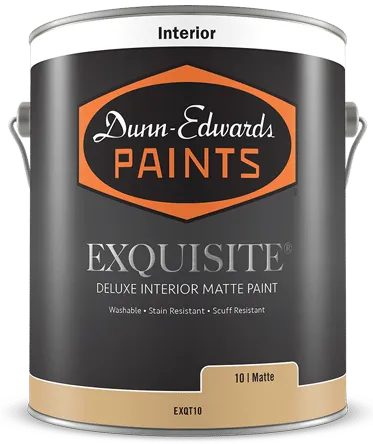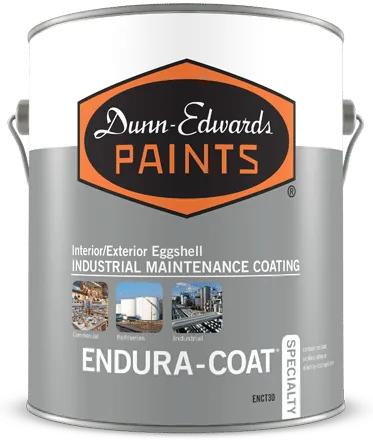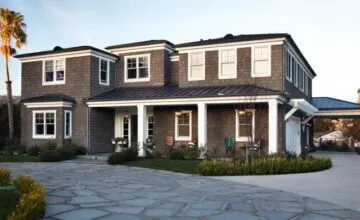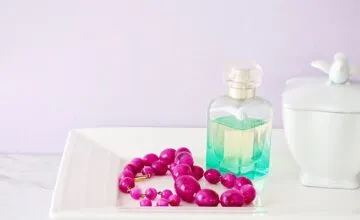What Is Paint Made of?
06/02/2013 | Tim Bosveld |
Our educational series on paint and color technology begins with a review of one of the basics: what is paint made of? The variety of paint products offered can be overwhelming. And with each variety of paint offering different properties that affect the outcome of a design project, understanding what's in a can of paint is key to success.
All paints generally have four main ingredients -- pigments, binders, solvents (liquids), and additives. These components of paint work together to create the final product. To understand what is in paint and how paint works, let's examine each ingredient.
What Is Paint Made From: The Four Main Components
1. Pigments - Provide Color, Hide, and Bulk
What makes paint colorful? Pigments are finely ground particles that give paint its color and are key to Dunn-Edwards' Perfect Palette color system. When examining what paint is made out of, there are two primary types of pigment:
Prime Pigments
These contribute to both wet and dry hide in paint. Titanium dioxide (TiO2) is the most costly pigment, and it contributes directly to a paint's wet hide while providing whiteness. Colorants are prime pigments that provide the actual color within the can. There are two main types - organic and inorganic.
- Organic colorants: Provide brighter colors; examples of these pigments include hansa yellow and phthalo blue. These are not very durable for exterior paint application.
- Inorganic colorants: These include duller, earthy colors and are more durable for exterior paint application. Examples of these kinds of pigments include red oxide, yellow ochre, and umber.
Extender Pigments
What elements are in paint to add bulk? Extender pigments are lower-cost pigments that give extra weight or bulk to the paint. These pigments contribute only to a paint's dry hide, but are necessary to control gloss. Some extender pigments also provide additional film performance in scrub or abrasion resistance areas. Commonly used extenders include:
- Clay: Used mainly in interior paints, clay provides hiding power.
- Silica: Provides enhanced durability in exterior paints and scrub and abrasion resistance.
- Diatomaceous silica: Consisting of fossilized organisms, this form of silica is used to control sheen levels.
- Calcium Carbonate: Used in both interior and exterior paints, calcium carbonate, also called chalk, is a general-purpose, low-cost, low-hide pigment.
- Talc: Also called magnesium silicate, talc is a soft, general-purpose extender pigment.
- Zinc oxide: Used primarily in primers and exterior paints, zinc oxide provides mildew resistance, corrosion inhibition, and stain blocking support.
2. Binders - Provide Performance and Support for Dry Paint Film
What is house paint made of that makes it stick? Binders are ingredients that provide a binding effect that holds the pigments together to create a dry film on the surface. A paint's binder is the key ingredient directly related to a paint's performance, including adhesion, washability, scrub resistance, fade resistance, or gloss retention.
Types of Binders in Paint Ingredients List
Alkyd (Oil) Based Binders
Products like ARISTOSHIELD use alkyd-based binders made from various oil derivatives to create a hard, durable finish. Traditional alkyd paints dry to a very hard finish and provide superior adhesion and flow, and leveling; however, they will yellow in light colors and are prone to oxidation and chalking when used on exterior surfaces.
As technology and VOC restrictions have changed over the years, fewer paints today are made with traditional alkyd binders. A newer technology based on modified oil binders is available: alkyd emulsion. This type of hybrid binder gives you oil-like performance with the ease of soap and water clean-up.
Alkyd-emulsion paints dry harder, flow more smoothly than typical latex paints; however, they may still yellow in lighter colors. If used on exterior surfaces subjected to UV exposure, alkyd-emulsion paints may eventually oxidize and chalk over time.
Latex Paint and Ingredients
Latex binders are used in water-based paints. There are various types of latex binders available, such as 100% acrylic, styrene acrylic, or vinyl acrylic, each providing specific performance characteristics.
Acrylic Paint and Ingredients
- 100% Acrylic binders: These are often used in exterior paints as their benefits include adhesion (both wet and dry), fade resistance, and alkali and efflorescence resistance. For exterior applications, 100% acrylic binders like those found in our SPARTASHIELD line are typically regarded as the best overall-performing..
- Adhesion under wet conditions allows for greater performance in blister, cracking, and peeling resistance.
- UV fade resistance allows the painted surface to retain its color and sheen longer.
- Alkali resistance means the paint is less likely to "burn" over fresh concrete or masonry.
- Vinyl acrylic, also called PVA, binders: Often used in interior paints as the benefits include scrub resistance and washability.
- Styrenated acrylic binders: Often used in masonry primers/sealers and top coats due to their resistance to alkali burn and efflorescence.
3. Solvents (Liquids) - Provide a Vehicle for the Pigment and Binder
What is paint made from that allows it to flow? Solvents, or liquids, are the vehicle for allowing paint to get from the can to the surfaces, and these types of liquids differ depending on the type of paint. Combining the pigments and binders, considered solids, with the liquids creates the paint coating you see in the paint can.
- Oil-based and alkyd paints: The liquid is typically paint thinner or another type of solvent.
- Latex paints: The liquid is primarily water.
Higher-quality paints like our environmentally-friendly formulations allow for more solids, typically 35-40%, depending on gloss level. Solids by volume indicate how much paint will remain on the surface after the liquids have evaporated.
The overall paint performance is directly attributable to the makeup of the solids. Just because a paint has high solids by volume does not always translate to a high-quality product.
4. Additives - Provides Additional Property Enhancements
What are the ingredients in paint that give it special properties? Additives are used in paints to create additional performance properties, and the most commonly used are:
- Thickening agents: Provide "viscosity" or additional thickness so the paint can be applied properly; also allow for better "flow and leveling" and resist a splatter effect when rolling out the paint
- Surfactants or soaps: Provide paint stability so the paint won't separate; also, keep the pigments dispersed in the liquid to allow for better hiding power and additional assurance for color accuracy
- Biocides: In latex paints, there are two types of biocides used – a preservative to keep bacteria from growing, and a mildewcide to discourage mildew growth
- Defoamers: Provide a way to break bubbles as they are formed during the paint manufacturing process, when paint is shaken at the tint center, and when paint is applied onto a surface
- Co-solvents: Provide additional liquids to the water and can assist the binders in forming a good film when applied in cold temperatures, and assist brushing properties, so the paint has time to be applied before drying
What Is Paint Made Of Chemically: Bringing It All Together
Understanding what paint is made out of helps explain how does paint work. All four ingredients are key to creating the foundation for a top-quality paint. The chemical composition of these components determines the paint's properties, from its application to its durability.
Our product specification guides can help you select the right paint for interior walls, exterior siding, or specialized applications. Knowing the components of paint helps you identify and solve common paint problems and choose the right product for your needs.
Happy painting!















